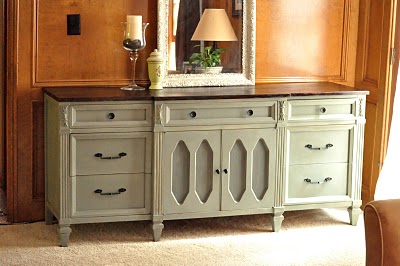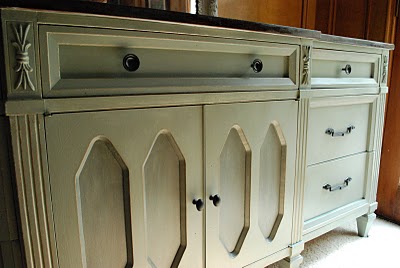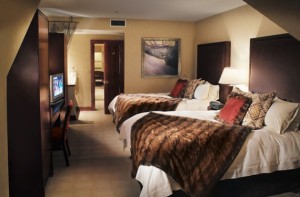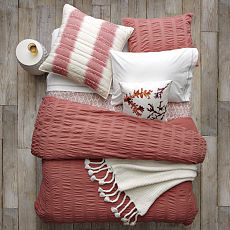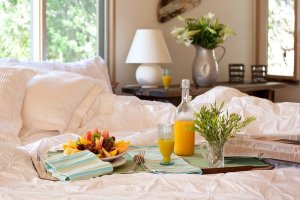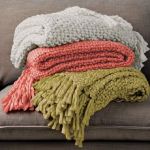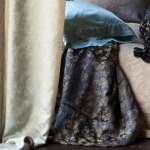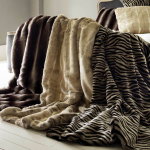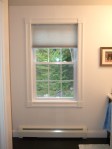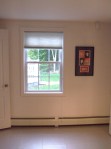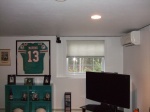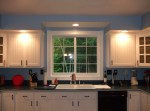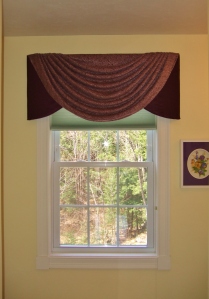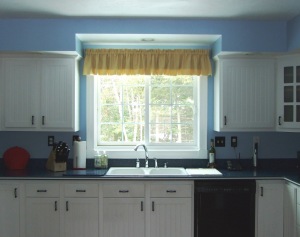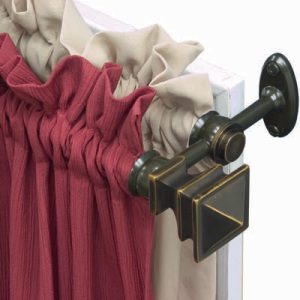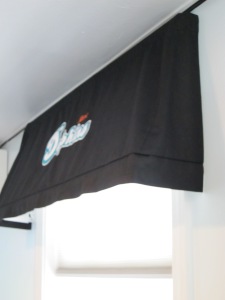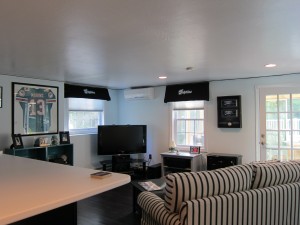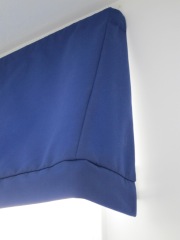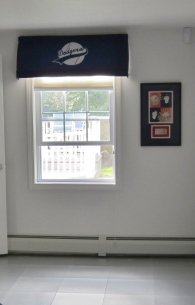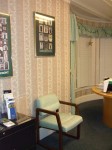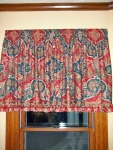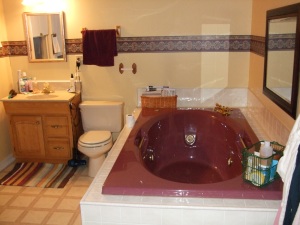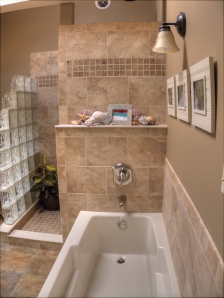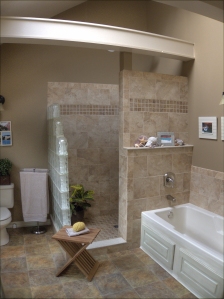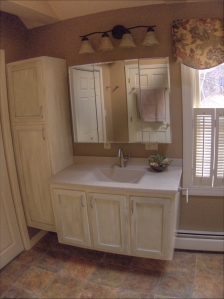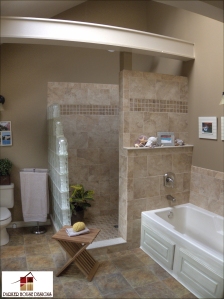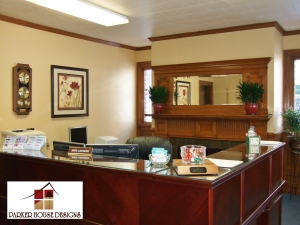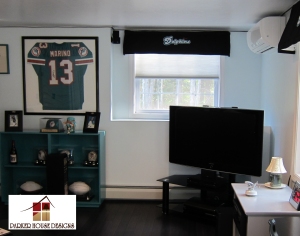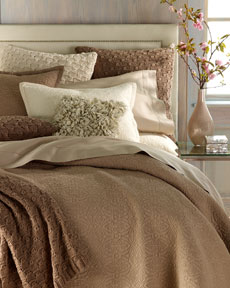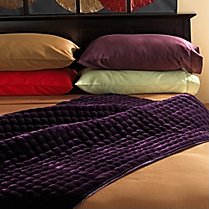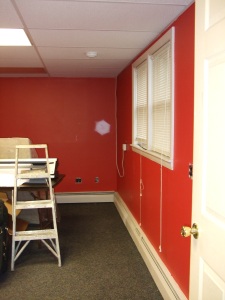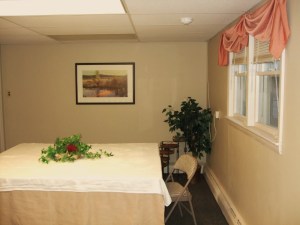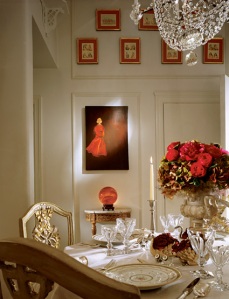For this Blog post, I am super excited to introduce Al Koehler who is a local, professional painter that I have worked with for the last few years. Each time we have done a project together, I have learned something new so I thought would see if he would be willing to share some of this extensive knowledge with all of us.
Graciously, he agreed to an interview so that is the format that will follow. The first half are questions from me and the 2nd round of questions came direct from my Facebook Fan page followers. Sending out many thanks to all who participated online!
NOW…the answers to our burning painting questions…
 Q: What are the different types of paint that can be used on interior walls, ceilings & woodwork? What are the benefits of each one?
Q: What are the different types of paint that can be used on interior walls, ceilings & woodwork? What are the benefits of each one?
A: There are many different types of paints for the interior of your home. Popular options today are water-based paints that come in a variety of sheens and can be tinted to any color that you want. The standards are flat, matte, eg-shel, satin, semi-gloss and gloss. Each option is a special blend that create specific finishes on walls, trim, cabinetry and more.
For example, flat paint is great for ceilings and walls. Flat paint is not washable but hides imperfections best. Matte and Satin paint are typically used on walls and Satin, Semi-gloss and Gloss are mainly used for woodwork. These paints can stand a little more abuse and are washable. Choosing the right paint is key.
There are many variables to consider when choosing your paint, including what the surface condition is, what your overall goal/design is, what type of primer will be needed etc. If you are not sure about some of the specifics, it is always good to consult with a knowledgeable painter (like Al) and/or a reputable paint supplier ~ it could save you hours of time, money & frustration!
Q: What is primer paint? Are there different types? Do you have to use it on every project? Do you need a special type for dark colored paint?
A: Primer is the base coat of paint which is needed for the paint to adhere to the surface. Its primarily used on non-primed surfaces but is also used over existing paint that could be hard to cover. There are many primers, your basic latex all around primer that can be used on most surfaces and another popular primer is Bonding Primer, which can be used for glossy surfaces such as glass, countertops, metal and glossy surfaces. Most primers can be tinted.
When you are using a dark paint, you should use a tinted primer. They usually are mixed in a variation of gray based on the depth of color chosen for your wall paint – this is determined by the paint experts in your local storefronts. Another option is to have the primers tinted to the color of the paint chosen.
Q: What is the best way to paint a front door that is metal?
A: Use a primer that includes the word “bonding” in the label . These primers bond to glossy surfaces such as glass, Formica, metal, kitchen cabinetry and plastic to create the perfect base for your latex paints to glide on and cure properly. Most primers can be top coated within a few hours.
Q: I’ve noticed that paint rollers come with different sized “naps”. Why is that? Which size is appropriate for what type of job? How do I avoid getting fibers from the rollers on the walls?
A: There are a few different sizes in nap for rollers, the smother the surface the less of a nap you would need. 3/8 nap is regularly used for most surfaces. If your dealing with textured walls or ceilings use a roller with a 1/2 inch nap.
IMPORTANT TIP: “Don’t cheese on the roller, a high quality roller will save you undue frustration and give you the professional look that you want on your walls. Cheap rollers leave hairs/fibers on your walls. I recommend rollers from Wooster, Purdy or the Contractor Series from Sherwin Williams.”

AND…the answers to the burning painting questions from our Facebook Fans…
Q: What is the best paint to use in a bathroom?
A: The best paints to use in bathrooms is Ben Moore Aura or Sherwin Williams. These paints do not need a primer, which is a plus because it leaves out the primer coat. Two coats of these paints and you have a beautiful finish so there is no need for extra work. When using higher quality paints, the key is to prep the surface properly before painting on your new color.
A primer is not needed if you are painting over an existing color but I recommend a light sanding using a 220 gauge sandpaper to rough up the surface (creating the same adhering quality that a primer would provide) and to remove any fibers/imperfections.
The newest advancement in the paint industry is the introduction of paints that include the primer and top coat in one can. Aura by Ben Moore and Duration by Sherwin Williams are great options with built in primers. You can expect to pay more for these options but they significantly reduce time/coats needed to complete your job.
IMPORTANT TIP: “Make sure your exhaust fan is working properly. Keeping the room free of extra moisture will extend the life of the paint in a bath.”
Q: What should you use to paint textured ceilings to limit drip messes?
A: A 1/2 inch roll nap is good for a textured ceiling. A quality roller is important as it lays the paint on evenly and does not lose hairs/fibers in the process.
IMPORTANT TIP: “If you need to wipe dust or debris from a wall or trim, use a tack cloth. A tack cloth is like a sticky cheese cloth that will “grab” anything from the surface rather than just move it around. Avoid using wet cloths to clean surfaces. The moisture could create problems under the paint if it the area is not given enough time to dry out completely before application of paint.”
Q: Why is the paint on my walls peeling off in sheets?
A: Paint peeling is usually caused by moisture under the paint which lifts the paint off in sheets.
Other reasons that may cause peeling paint are:
~No primer was used as a base coat.
~The primer coat or 2nd coat of finish coat were applied too soon. Paint (primer or top coat) need time to dry/cure properly.
~Painting over a glossy surface without prep.
Q: Why does anything that touches my walls leave marks?
A: Paint is a delicate, very thin coat of colored wall finish. Anytime you touch a wall with your hands that has a flat finish, you’ll see the oil imprint of your hands. That is why flat paints are recommended for rooms that have less traffic and people inhabiting them.
In all my years painting for a living, I’ve learned that paint is not mark proof. There are better paints than others that can take the abuse. This goes back to the very first question and how important it is to use the correct paint finish for the appropriate areas in your home.
Keep the following in mind:
Flat Paint – Best for ceilings and low traffic areas – not washable
Matte – Is a step up from Flat paint because it includes a very light sheen. Achieve the same “look” as Flat provides with the bonus that it is washable.
Eg-shell/Satin – Best for walls in high traffic areas – washable
Semi-gloss/Gloss – Good for woodwork/trim – creates a sheen on all surfaces – washable
IMPORTANT TIP: “The best way to guarantee that your walls will stay perfectly clean is to install hockey glass over all painted surfaces. The only maintenance tools needed are Windex and paper towels.”
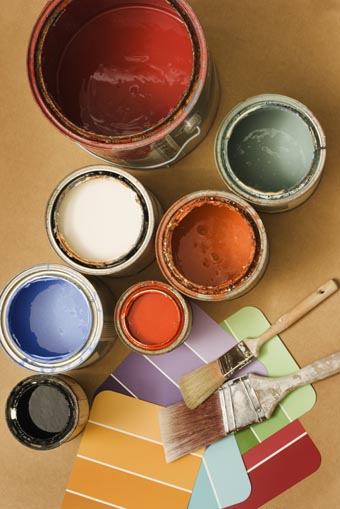
You can tell from Al’s answers that he is a fountain of knowledge and has a great sense of humor. If you have more questions for him, please feel free to post them here and we will get the answers of to you right away.
I would to thank him for being my special guest this month on the Blog and for offering such great information about painting in our homes.
Here is a little more about Al:
~He’s been painting for 25+ years with additional background in home building Project Management
~During his career he has worked all over New England mainly working in Amherst, around Lake Winnipesaukee and on Governor’s Island. For the last 14 yrs. Al has been primarily painting interiors creating beautiful finishes with nice color combinations for many different types of rooms. Some of his other skills include drywall repairs, water damage repair, skim coating, textured ceilings and wallpaper.
~His specialty is with Venetian Plaster, Marmarino Finish which is a glass feel finish with a stone look. If you are looking for a classic finish in your home be sure to ask him about this beautiful option.
If you would like to connect with him, his contact information is below:
EMAIL: akoehler@metrocast.net or 58noark@gmail.com
PHONE: 603.738.8578
He also has a Fan Page on Facebook – CLICK HERE to check it out and sign on as one of his newest “likers”.


